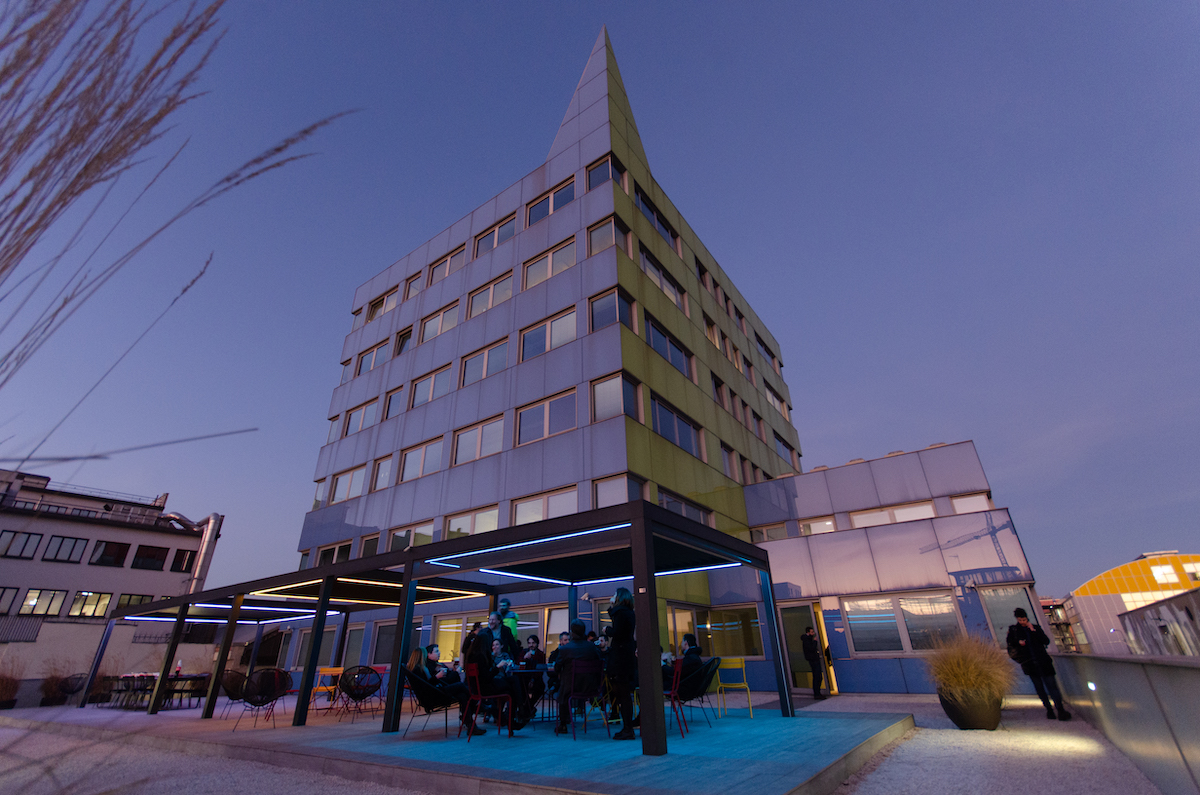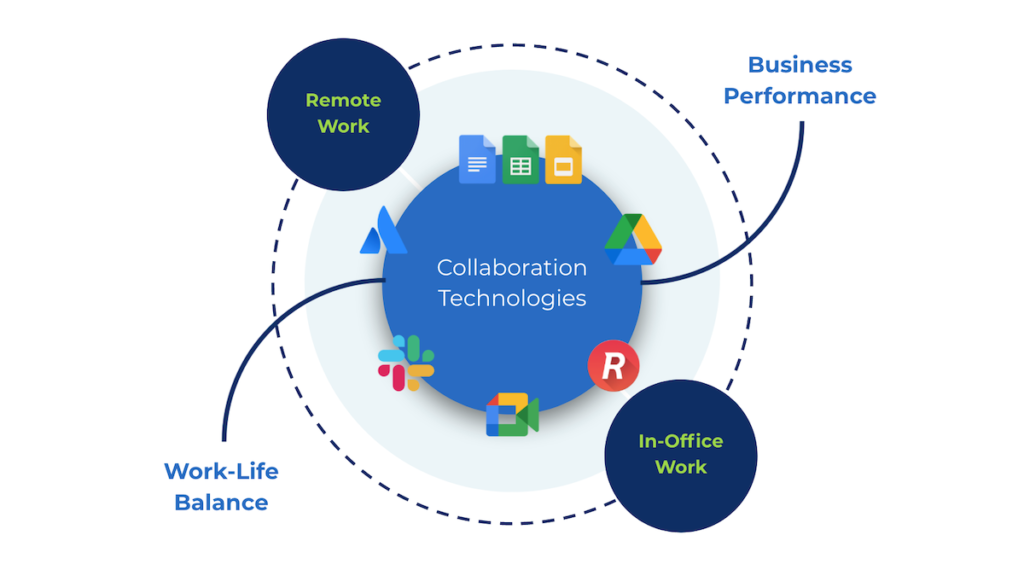15 Nov

The Elastic Workplace
Rethinking the way we work to become a more flexible, agile, and productive organization.
Elastic Workplace is Moviri’s new initiative to rethink the way we work as a more distributed, digital and fluid organization.
Elastic Workplace builds on Moviri’s innovation credo: the belief that, to build a successful technology business, you need talented people, focused on the right problems, and a culture of trust and unselfish collaboration. Creating the conditions to realize this vision in the workplace requires careful and thoughtful decision-making.
The word elastic is meant to capture the spirit of our effort — to achieve a purposeful, dynamic balance between the demands of the business on one hand and individual flexibility on the other, AND provide an adaptable foundation to support our managers and their teams in achieving business outcomes.
At Moviri, as a company already well positioned with its collaboration tools and capabilities to pivot to full remote work, the pandemic has provided an opportunity to innovate our organization from within.
Elastic Workplace will help us work better and get more satisfaction out of work. Ultimately, our future will be defined not just by the products and services that we bring to our customers, but also by doing the work the right way, as an agile, transformative, conscientious employer and as employees equipped with the tools to help the organization move faster and succeed.

A thoughtful process
In the early spring of 2020, after absorbing the initial brunt of the pandemic’s impact, we started discussing how we needed to think about the future of work at the company, after the pandemic and beyond.
We started by asking ourselves important questions, listening to employees across the organization, keeping an eye on other companies’ approaches while remaining focused on what is unique about our business.
How are employees adapting to remote work? How is it working? Have teams been able to sustain productivity? Are there areas and processes where we are underperforming? What are the long-term impacts on our business and on our culture?
We soon created a task force to design the transition to our future state to distributed and remote work. The task force was focused on a few key outcomes:
- First, we did not want to do something because others were. Every company, every culture, every organization is unique, so you have to come to your own conclusions about what is best for your organization.
- Second, we resisted the temptation to jump to conclusions. In the wake of the pandemic, many companies made bold and sweeping commitments, promising a future of 100% remote work. Experts touted many benefits of working from home, while offering little measurable evidence. With a change of this magnitude happening so fast, we felt we needed to take our time to consider all the opportunities and the risks.
- Third, we assumed evolution and change. We realized that there would be no sudden return to “normal”, to the way things were before Covid. Instead, we started from the assumption that any workplace decision would have to be thought of as temporary and iterative. We also assumed an evolving labor and regulatory environment, as governments around the world take incremental steps to navigate the transition to a post-emergency state.
For months, the task force gathered information and feedback.
How are our employees experiencing remote work?
Employees reported increased focus and productivity, time saved from not commuting, and a newfound appreciation for time spent with family. They also talked of difficulties in communicating with their teams, lack of serendipity and socialization, difficulty in tackling complex issues over video. At the same time, some metrics of team productivity and business-related performance showed signs of degradation.
What are technology industry leaders doing?
We wanted to understand how major companies in our industry, such as Google, Amazon, Accenture and others, were navigating workplace decisions as they responded to the pandemic. We also wanted to learn from the experience of those companies who had already set up large-scale remote work programs, but had later decided to reverse course — and why they did it.
How do remote-first tech companies operate?
We then looked at the growing pool of successful tech companies that have been remote and distributed since inception, such as Automattic and Github. Are these “officeless” companies operating in fundamentally different ways compared to traditional technology companies? What practices and models can we pick up from them that we could successfully implement at Moviri?
What are our customers doing?
Finally, as many of our employees used to spend the majority of their time at customers’ offices, we wanted to be careful that our policies are compatible with the ones of our customers. We had to make sure we understood our customers’ pandemic response strategies and their likely evolution over time.
At Moviri, we believe that technology has the unique power to bring revolutionary changes and that those brave enough to be part of them can create huge opportunities.”
The Moviri Manifesto
Principles of Elastic Workplace
Our purpose in designing the Elastic Workplace program is to foster a more modern approach to work that balances personal and professional demands AND to introduce greater strategic flexibility.
Imagining a balanced, hybrid and flexible workplace is a complex exercise, with lots of moving parts, and even more opinions about it. We landed on a few fundamental guiding principles:
1. Business first
A healthy business is the foundation of a healthy workplace. When a company generates excess returns, there are more opportunities for professional growth, more innovation, more money for perks, training, bonuses.
As a company, we prioritize what is best for our customers and for the long-term health of our business. Elastic Workplace is no different.
Elastic Workplace is successful if it generates demonstrable team productivity improvements, increases employee retention, gives us access to larger hiring pools, makes us work better, ship faster and sell more.
2. 100% remote is not “us”
We believe that work outside of the traditional office has an important role to play in a modern organization. We also believe that 100% remote work comes with some important downsides.
In our line of work, it has proven difficult to replicate virtually the richness and breadth of communication, collaboration, inventiveness and team spirit that happens when people interact in person. There are other ways to meet in person other than in an office, but the access, familiarity and infrastructure of a shared, physical workspace makes it the first option.
We believe that a hybrid, adaptable, flexible work system which incorporates both remote and office work is the best direction for our business.
3. Different roles, different rules
No two jobs are created equal. In designing our flex work policy, we decided to differentiate access to remote work based on each individual role, job content, seniority, managerial responsibility and external business constraints.
Based on these criteria, we set a maximum number of days per month when each employee works remotely. Participation by employees is entirely voluntary and they can organize their schedule in collaboration with their manager to best meet the needs of their team and their customers.
4. Maximum elasticity, within structure
Without a clear work structure and well-designed guidance, you may end up with confusion, uneven application of principles, and with employees in similar jobs with wildly different treatment.
If, on the other end, you set policies that are too prescriptive, you cannot harness the full potential of flexibility and agility, and the gains in productivity and satisfaction that we hope to achieve.
Elastic Workplace has been designed to empower employees and managers with as much flexibility as possible in managing the logistics of work, while at the same time defining clear boundaries that ensure that policies are applied fairly.
5. Investing in strategic agility
We operate in an industry that moves fast and where competition, for customers and for talent, is intense.
One of Elastic Workplace’s goals is to enable greater strategic agility. That may mean being able to take advantage of a market opportunity by quickly opening a virtual remote hub in a new country, or increasing our attractiveness to top talent in locations far from HQ.
It also means continuing to invest in collaboration tools, equipment, and infrastructure; evolving our performance management processes; investing in our office spaces to accommodate a different way of working.
The start of a journey
With these principles in mind, we have designed an hybrid, adaptable framework to support flexible work at Moviri. We have started implementing it this early fall and will continue to work on it over the next weeks and months, in incremental steps .
The genesis of Elastic Workplace has been a lengthy, thoughtful, and, at times, contentious process. As a team, we emerged from it with a more nuanced understanding of the modern workplace, as much more than a physical place, but rather a complex mental and social space where the interplay of individual needs and desires, business priorities, team dynamics and society at large require that companies articulate policies that are deliberate and purposeful.
We also realized that, for all the work we put into designing the ideal workplace system, the solutions we come up with today may be inadequate tomorrow.
No one has a crystal ball into the future of work. We undertake this project with the intent of continuing to adapt as the world around us changes and as our people, the true engine of our success, change with it.
Categories
- Akamas
- Analytics
- Announcements
- Arduino
- Big Data
- Capacity Management
- Cleafy
- Cloud
- Conferences
- ContentWise
- Corporate
- Cybersecurity
- Data Science
- Digital Optimization
- Digital Performance Management
- Fashion
- IoT
- IT Governance and Strategy
- IT Operations Management
- Life at Moviri
- Machine Learning
- Moviri
- News
- Operational Intelligence
- Partners
- Performance Engineering
- Performance Optimization
- Tech Tips
- Virtualization
Stay up to date

© 2022 Moviri S.p.A.
Via Schiaffino 11
20158 Milano, Italy
P. IVA IT13187610152